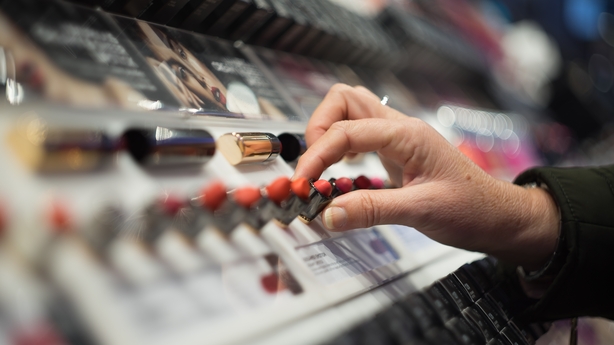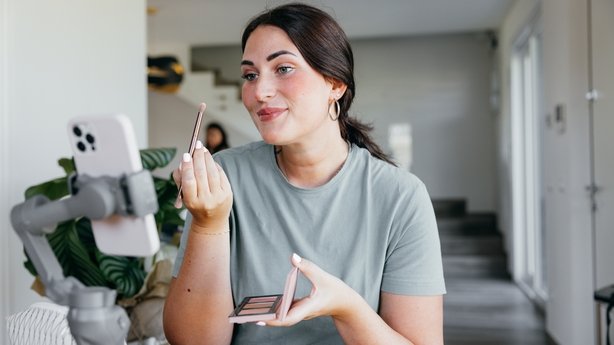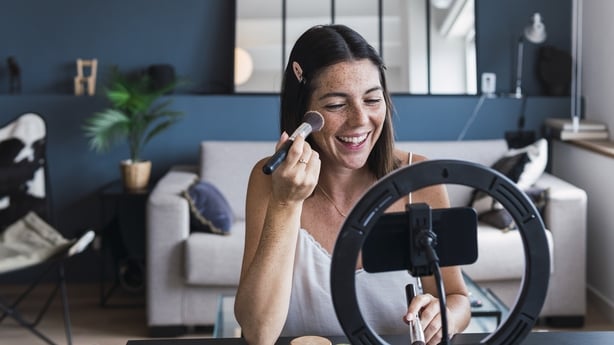Journalist Sarah Magliocco dives into the world of beauty reviews, affiliate links and hyperconsumerism to find out if 'de-influencing' can put a dent in our spending habits.
As discussions of sustainability and the importance of mindful purchasing have made their way into the mainstream, it's no wonder we are seeing a move towards a trend of "de-influencing" – where creators explain to us why we don't need to purchase new items, rather than why we do.
Deinfluencing isn’t a contemporary concept. Countercultures have pushed back for decades against the ideas of what people are "supposed to" buy or own to fulfill a commonly agreed-upon set of success indicators, but seeing it expressed through the medium of social media is relatively new.

There have been a number of eras marked by a critical view of certain influencers in the short history of social media.
During the beauty industry boom of the mid-2010s, we saw the astronomical rise of online makeup gurus touting their discount codes for various brands, recommending new products in each new piece of content.
This era brought us trends like matte liquid lipstick, blindingly bright highlighter, and makeup challenges that got wackier as their propensity for virality crept up, but it also heralded the dawn of a popular new theme of content: the anti-haul.
Kimberly Clark, a self-described "anti-consumerist beauty guru and drag queen" posted the first anti-haul in November 2015. The video created a trend on YouTube, with other creators getting in on the opportunity to explain what they were not going to buy and why when it came to makeup.
Clark previously explained that she made her first anti-haul as a response to the influx of beauty content that she felt seemed to have less to do with skill set and creativity, and more to do with the purchasing power of the creator and being "materialistically satisfying."
Affiliate marketing opened up a whole world of financial opportunities for online content creators, as those with fewer followers could still make money from their digital output through affiliate links, while bigger influencers could do the same while also supplementing their income with official brand endorsements and sponsorships.
This method sees a content creator asking their audience to make purchases through their specific link, which allows the brand or retailer to see where their purchases are being directed from, and gives the influencer a cut – anything from 1% of the purchase price up to 25%.

Affiliate marketing seemed to democratise the ability to make money online, as anyone with a phone and a knack for making videos was now able to glean a few cents from their viewers' clicks.
However, this gave people a reason to promote consumption more than ever, as the volume of referrals dictated the amount of money they could rake in. So while people may ordinarily create organic content about products they like just for the sake of sharing a good recommendation, there was also an incentive to promote products they can secure an affiliate code for.
This recommendation culture we are used to seeing on YouTube has become synonymous with TikTok, as the short-form video method of delivery is snappy, memorable, and requires minimal effort to produce.
Impulse purchases under the excuse of "TikTok made me buy it" have become part and parcel of the consumer landscape.
The de-influencing trend claims to be the antidote to this, pointing out why you should not buy a certain trending beauty product or eye-catching viral homeware item. While most videos are about beauty and fashion pieces, others even influence people away from certain food trends or travel locations.
Juliana Shiel, an Irish artist and beauty content creator who has garnered 78,000 followers on TikTok thanks to her editorial makeup looks and chatty videos, has dabbled in a bit of de-influencing herself, with the aim of making beauty consumers more aware of what they are buying in to.
"In the days of magazines and TV ads, it was easy for consumers to discount the claims of hair, skin, and makeup products. It was unattainable models and celebrities endorsing them in full studio lighting and editing", she says.
"With the rise of the influencer, especially on TikTok where you feel you get to know and trust creators, paid ads are much more convincing. It's no longer Kim Kardashian promoting weight loss teas, it’s the girl you went to school with or your local beautician-turned-influencer. It’s closer to home and more convincing as she swears by the de-bloat tea she’s being paid to promote, as well as making a commission from.
"There will always be brands and people who take advantage of people’s insecurities, I can’t stop that, but I can share a little insight from my own knowledge and experience. As well as products that won’t work, the de-influencing trend aims to deflate the hype around beauty products that have gone viral online," she says.

"I see women around me who will buy into every single one, only to be disappointed. This hype can come from misleading ads and sponsored posts, so de-influencing is about giving tough and honest reviews, based on ingredients and overall performance, not a first impression that is filmed with a TikTok filter under a ring light!"
Like with any trend, however, there are also those who seek to swivel it to their advantage. Some content claiming to be de-influencing still has consumerism still at its core, as it shares alternative options to popular products, often with a link to shop through the creator's affiliate link or to their personal online storefronts.
The supposed substitutes are what we are meant to be influenced to purchase in these circumstances, rather than avoiding purchasing at all.
While this scratches a specific itch for people who feel that they would truly benefit from a product but can't spend the money on the original and need to opt for a dupe, it shows that the de-influencing trend cannot be severed from consumption culture entirely.
The most basic method to remove yourself from the urge to overspend and overconsume is something we all learned in primary school – reduce, reuse, recycle.
With an emphasis on reduce here, we can find alternatives we already own to fashion trends and beauty items being showcased as the newest must-haves, or waiting a few days to reconsider a purchase rather than pulling the "buy now" trigger immediately after seeing a piece of influencer content about it, or flexing our willpower by saying we just don’t need to make a purchase at all.
It is the inconvenient truths about our convenience culture that tend to get people’s backs up – a potential reason why de-influencing is growing popular – but we need to arm ourselves with information and context as our methods of shopping and influence change.
While social media may be a popular avenue for influencing our lives, it also brings with it a huge opportunity for education and insight.
As long as people buy and people sell, it won't be possible to remove interacting with shopping and consumption from our day-to-day digital navigation, but ultimately we always have the power to choose whether or not we – for want of a better word – buy into the hype of what we see online.
De-influencing is just the most recent disruptor, but one that has the power to bring mindful purchasing to the forefront.
The views expressed here are those of the author and do not represent or reflect the views of RTÉ.


